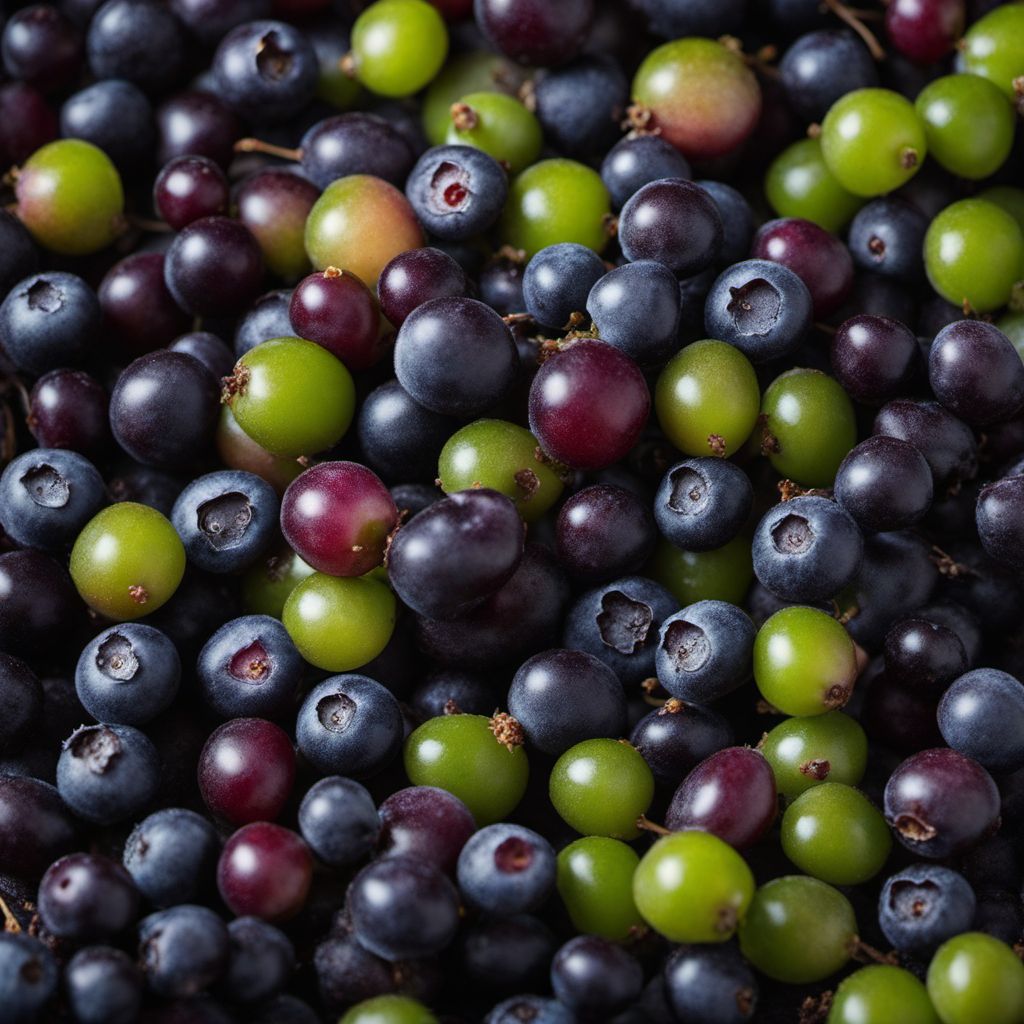
Ingredient
Aronia berries (purple)
The Mighty Purple Powerhouse
Aronia berries are small, round fruits with a deep purple hue and a glossy skin. They have a tart, slightly sweet flavor that is often compared to cranberries or sour cherries. The berries are firm and juicy, with a texture similar to blueberries. Their vibrant color makes them visually appealing in various culinary creations.
Origins and history
Aronia berries are native to North America and have a rich history in Native American cultures, where they were used for both culinary and medicinal purposes. They were traditionally used to make jams, jellies, and beverages due to their high antioxidant content. Today, aronia berries are cultivated in many countries around the world, including the United States, Poland, and Russia.
Nutritional information
Aronia berries are low in calories and rich in antioxidants, vitamins, and minerals. They are particularly high in vitamin C and anthocyanins, which have been linked to various health benefits, including reducing inflammation and supporting heart health.
Allergens
There are no known allergens associated with aronia berries.
How to select
When selecting aronia berries, look for plump, firm berries with a deep purple color. Avoid berries that are soft, shriveled, or have any signs of mold. Fresh aronia berries can be found in the produce section of some grocery stores, farmers markets, or online specialty stores.
Storage recommendations
To prolong the freshness of aronia berries, store them in a sealed container or bag in the refrigerator. They can stay fresh for up to a week. For longer storage, aronia berries can be frozen. Simply wash and dry the berries, then spread them in a single layer on a baking sheet and freeze. Once frozen, transfer them to a freezer-safe bag or container.
How to produce
Aronia berries can be grown in home gardens or small-scale farms. They thrive in well-drained soil and prefer full sun. Planting aronia bushes in early spring or fall is recommended. Regular watering and pruning are necessary to maintain healthy plants and encourage fruit production.
Preparation tips
Aronia berries can be enjoyed fresh, added to smoothies, baked into pies or muffins, or used to make jams, jellies, and sauces. They can also be dried and used as a flavorful addition to trail mixes or granola. Additionally, aronia berries can be infused into vinegar or used to make a refreshing herbal tea.
Culinary uses
Aronia berries are commonly used in various culinary applications, including desserts, beverages, and savory dishes. They can be used to make jams, jellies, pies, muffins, sauces, and even wine. In Eastern European cuisines, aronia berries are often used in traditional dishes such as pierogi fillings or as a topping for pancakes and ice cream.
Availability
Aronia berries are commonly available in North America, particularly in the United States, where they are grown commercially. They are also cultivated in countries like Poland, Russia, and Ukraine.

